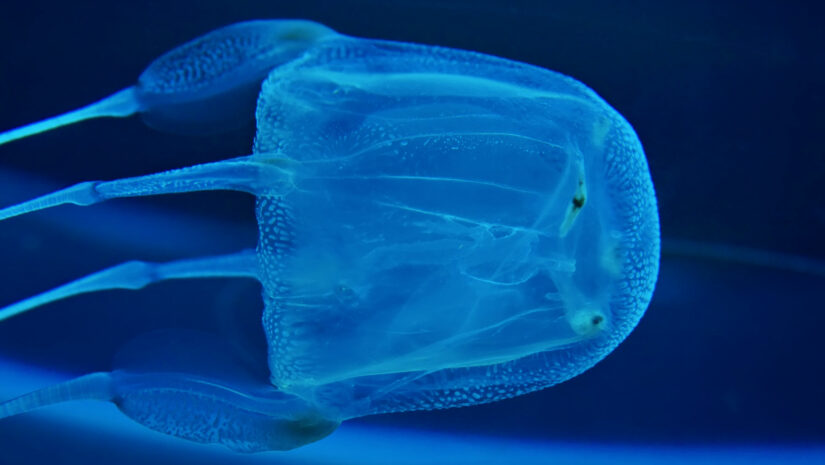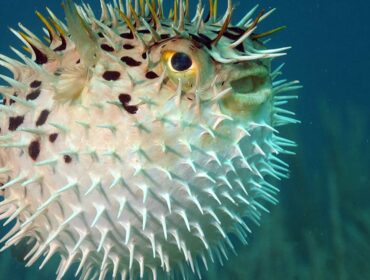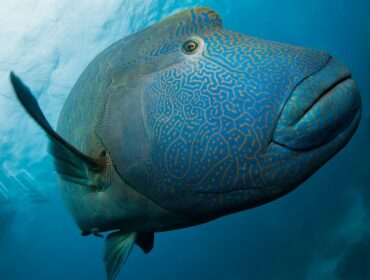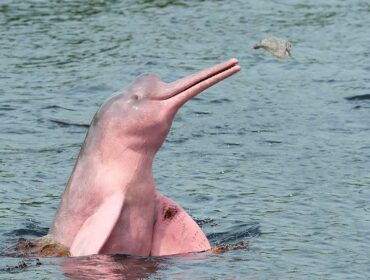There are almost 200 known species of jellyfish drifting through our planet’s seas. While many of them are actually quite harmless, there are several species that have highly venomous stinging cells that can cause serious consequences for humans—such as extreme pain or even death. Beware of these poisonous and deadliest jellyfish when you enter the water.
The possibility of encountering some of the deadliest jellyfish in the world may be rare, but knowing that their out there should be enough to remind you to always wear exposure protection while snorkeling and SCUBA diving—even in warm water! Victims should always seek immediate medical treatment in the event of a sting to hopefully avoid the many severe health risks that these poisonous jellyfish pose to humans.
Why is the box jellyfish so deadly?
The box jellyfish are the deadliest jellyfish because of their relative anatomical sophistication. They have two dozen eyes, and although they don’t have a brain, they do have a complex nervous system which gives them the ability to swim fast and propel themselves through the water.
Poisonous & Deadliest Jellyfish Species
In stark contrast to other (occasionally) stinging but harmless species of jellyfish, the following are extremely dangerous to humans. You’ll find that these jellyfish can be very difficult to spot given their transparent bodies. It definitely helps to be aware of the places where they may frequent and, if possible, to avoid swimming in those waters altogether.
If you have no choice but to go near their natural habitats, make sure to have a jellyfish first aid kit (which should definitely include vinegar) on hand. Also, make arrangements for someone to take you in case you need to be immediately transported to the nearest hospital in the event of a sting.
And of course, make sure that you don’t pee on your sting.
Chironex Fleckeri (Sea Wasp)
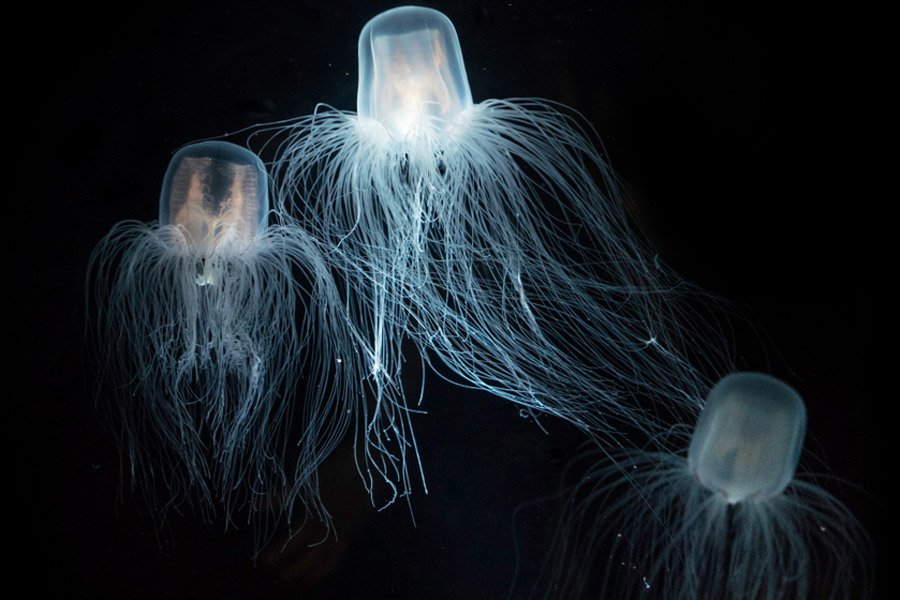
Chironex fleckeri, commonly known as a sea wasp, is one of the most deadliest jellyfish species not just because of its lethal poison. This large box jellyfish is nearly invisible, which makes them very hard to spot. They also prefer to hunt during the day and in shallow waters. This makes them more likely to come into contact with swimmers enjoying the beach.
The Chironex fleckeri’s venom the strongest of any species of jellyfish as it has the ability to kill an adult man with a dose that weighs about as much as a single grain of salt. One sting can result in extreme pain and excruciating burning sensations; if left untreated, it can cause cardiac arrest and death.
Said to be the deadliest jellyfish in the world, around 63 human fatalities have been attributed to the sea wasp over the course of 80 years in Australia. And those are just the known cases.
You can tell a sea wasp or a similarly dangerous box jellyfish by its pale blue, transparent color and four-cornered, bell-shaped head. Each corner of its bell head can have up to 15 tentacles, which can grow up to 10 feet long. If you want to avoid them completely, this extremely poisonous jellyfish primarily lives in the coastal waters of Australia and New Guinea and throughout the Indo-Pacific.
Characteristics and Features:
- Extremely powerful and (possibly) fatal sting
- Pale blue and transparent
- Cube-like, bell-shaped head
- Up to 10 inches wide and 10 feet long
- Grows up to 15 tentacles from each corner of the bell
- Found in coastal waters off North Australia throughout Indo-Pacific
Chiropsalmus Quadrigatus
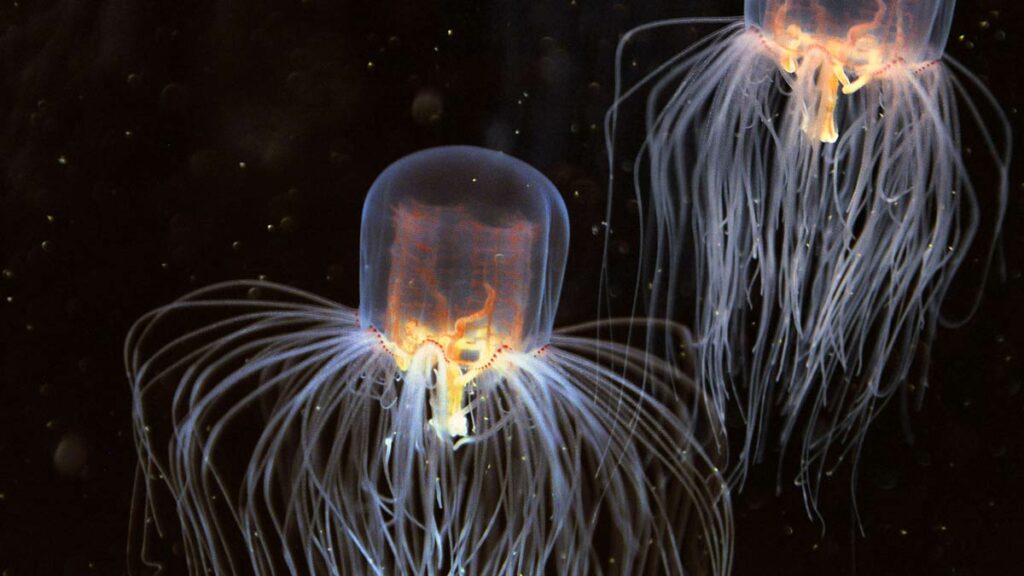
This species of box jellyfish is a smaller version of the Chironex fleckeri. Despite its diminutive size, this jellyfish packs quite a wallop. They live in the waters of the Indo-Pacific and the Western Atlantic Oceans. They’re called “habu” in Japan’s Okinawa Prefecture, where encounters between people and this species occur annually.
The sting of the Chiropsalmus Quadrigatus is very painful and can be fatal in certain cases. Its sting can cause cardiac arrest, respiratory failure with acute pulmonary edema, or death. Distinguishing features include a hand-like appendage on all four sides of the bell and seven long, flat tentacles growing from each of these appendages.
Scientists believe that its unusual tentacles are more suited to catching fish rather than the crustaceans and other jellies that normally fall prey to round-tentacled species.
Characteristics and Features:
- Very painful stings
- Transparent with flat, ribbon-like tentacles
- Up to 3.7 inches wide and 4.3 inches tall
- Grows up to 9 long, flat tentacles on each corner of the bell
- Found in the Indo-Pacific and Western Atlantic oceans
Irukandji
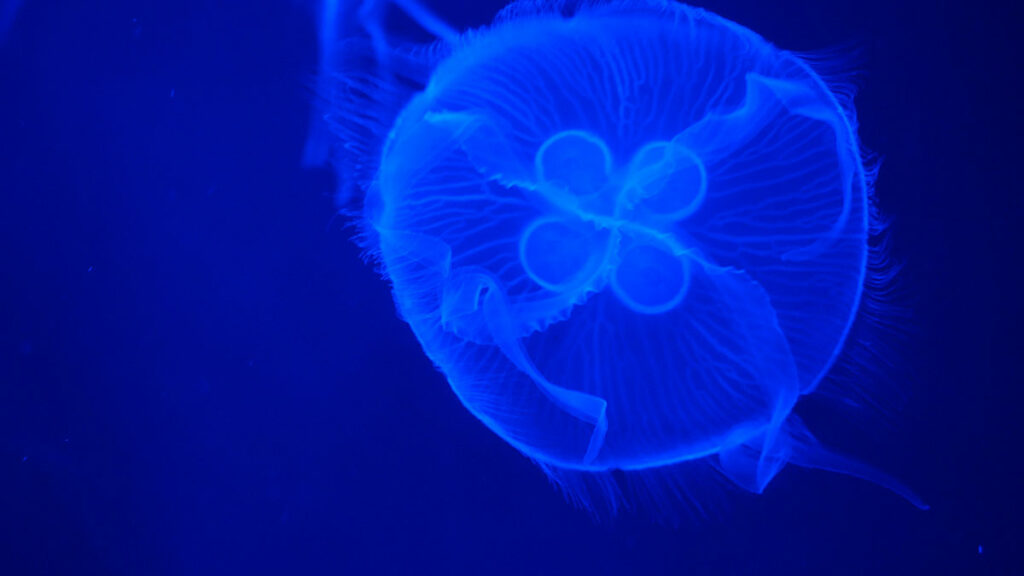
The tiny Irukandji is another jellyfish that does not play around when it comes to its venomous sting. Once only in Australian waters, recent sightings have been in Florida, Japan, Thailand, and even in the British Isles—which has led to growing concern over the possible global spread of this fatally poisonous jellyfish.
Its small size—about the size of an adult fingernail—and nearly transparent body makes it an incredible threat to humans, who will in most cases feel the burn without ever having seen their attacker. A sting from the Irukandji produces what is known as Irukandji Syndrome, from which the victim will feel severe pain that can last for up to 12 hours; burning sensations on the skin; nausea and vomiting; excruciating stomach cramps, as well as muscle cramps in the legs and arms; serious cardiac problems; and a strange psychological symptom that causes the victim to experience feelings of impending doom, which makes them actually beg for death. “Patients believe they’re going to die and they’re so certain of it that they’ll actually beg their doctors to kill them just to get it over with,” said Australian biologist Lisa Gershwin during an ABC radio interview in 2007.
Nonetheless, a sting by an Irukandji is not an immediate death sentence. While it is without a doubt one of the most dangerous jellyfish species in the world, people typically survive the sting with swift and proper treatment—and plenty of pain medication.
Characteristics and Features:
- Powerful, venomous stings that are not noticeable at first
- Up to 1 inch wide and 1 meter tall
- Fires stings from its bell and four long tentacles
- Nearly transparent and invisible in the water
- Lives in warm coastal and reef waters
Morbakka Fenneri
Morbakka fenneri, known as the fire jellyfish for its potent sting, lives in the calm waterways and marinas off the coast of Queensland. They prefer the warmer waters of the north. It is another species of box jellyfish and is a bit larger than the other jellyfish on this list. It measures roughly four inches in length with a two-inch bell diameter and a solid body with bright pink, wart-like protrusions on the top.
Their somewhat more visible size means that most people who get stung by the Morbakka fenneri can usually locate the source nearby. While the stings are indeed painful and have been associated with severe Irukandji Syndrome, they are not typically life-threatening.
Characteristics and Features:
- Potent sting that can cause Irukandji syndrome
- Transparent, box-shaped bell with large warty body
- Four flat, ribbon-like tentacles
- Up to 2 inches wide and 4 inches tall
- Lives in warm waters of eastern and northern Australia
Alatina Alata
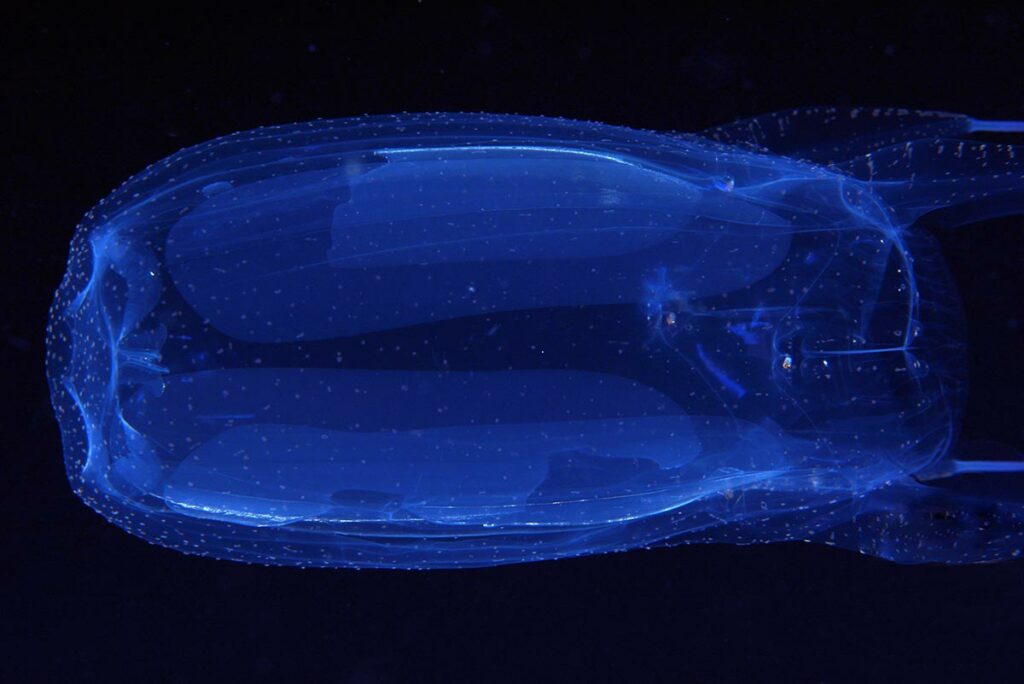
Another type of box jellyfish that is also commonly referred to as a sea wasp is the Alatina alata. Formerly known as Carybdea alata, it is known for swarming off the coasts and bay areas of Hawaii and other parts of the Pacific, as well as along the beaches of Pakistan in the Arabian Sea. Its sting is mild compared to that of the other species discussed here. However, some unpleasantness and discomfort should be be expected.
When stung by the Alatina alata, victims can typically spray the affected area with vinegar and apply hot or cold treatments that will reduce pain and swelling. However, due to its classification as a box jelly, Irukandji Syndrome could be triggered by the sting, so it is important to remain vigilant and seek immediate medical assistance when you are stung.
Characteristics and Features:
- Stings cause severe, immediate pain
- Transparent and glassy box-shaped bell
- Up to 6 inches wide and 12 inches tall
- Four long pink-yellow tentacles
- Found in the Pacific and Atlantic oceans
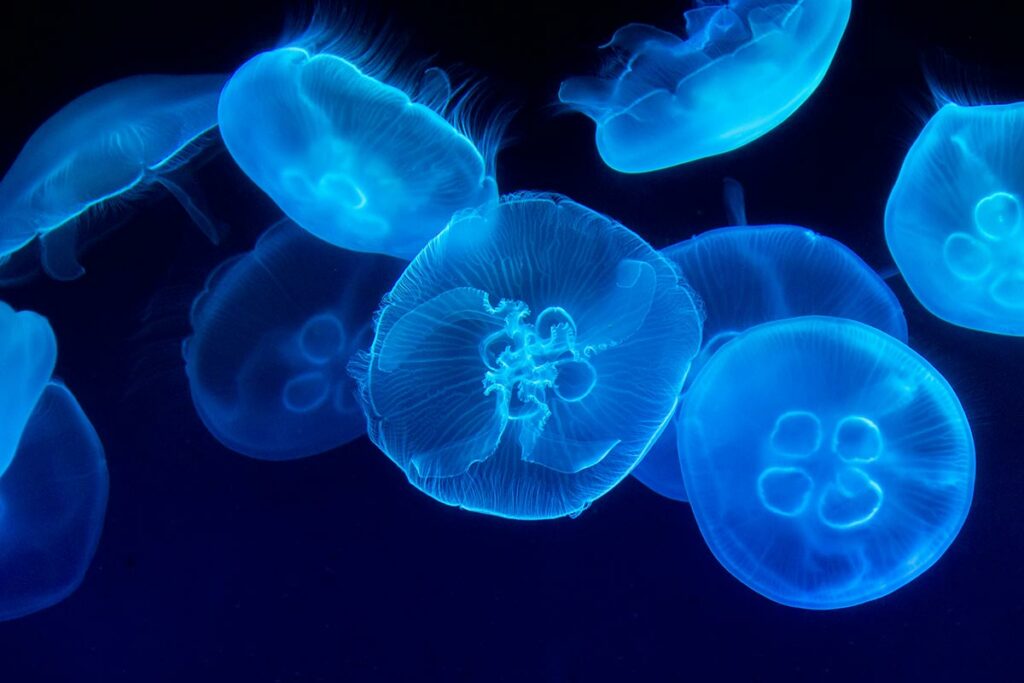
What to do if you’re stung by a jellyfish?
If you are stung by a jellyfish you should rinse the area with vinegar and remove any visible tentacles. Then soak the skin in hot water. If you suffer from a worse jellyfish sting from a deadly jellyfish, it’s important to get out of the water as soon as possible, and rinse the sting area with acetic acid. Then remove any visible tentacles, and call for emergency services immediately.
How to avoid box jellyfish
You can avoid being stung by this deadliest jellyfish by:
- Avoiding the water in areas where box jellyfish have been spotted
- Wear water shoes when walking along the shore or in the shallows
- Wear a skinsuit or wetsuit when in the water
- Always have medical kits easily available when you’re going in the water
Deadliest Jellyfish: Frequently Asked Questions
The box jellyfish is widely regarded as having the most painful sting among jellyfish species. Its venom contains toxins that target the heart, nervous system, and skin, leading to excruciating pain. Immediate medical attention is crucial when stung by a box jellyfish due to the severity of its sting.
The moon jellyfish is often considered the safest jellyfish to touch. With their delicate and translucent appearance, they have mild, non-harmful stings that are rarely felt by humans. However, it’s still advisable to exercise caution and approach any wild jellyfish with care to avoid unexpected reactions or potential allergic responses.
The Sea of Japan, also known as the East Sea, is renowned for having a significant population of jellyfish. Its warm waters, abundant plankton supply, and unique currents create an ideal environment for jellyfish proliferation. This region experiences periodic jellyfish blooms, attracting attention and concern from marine enthusiasts and researchers alike.

